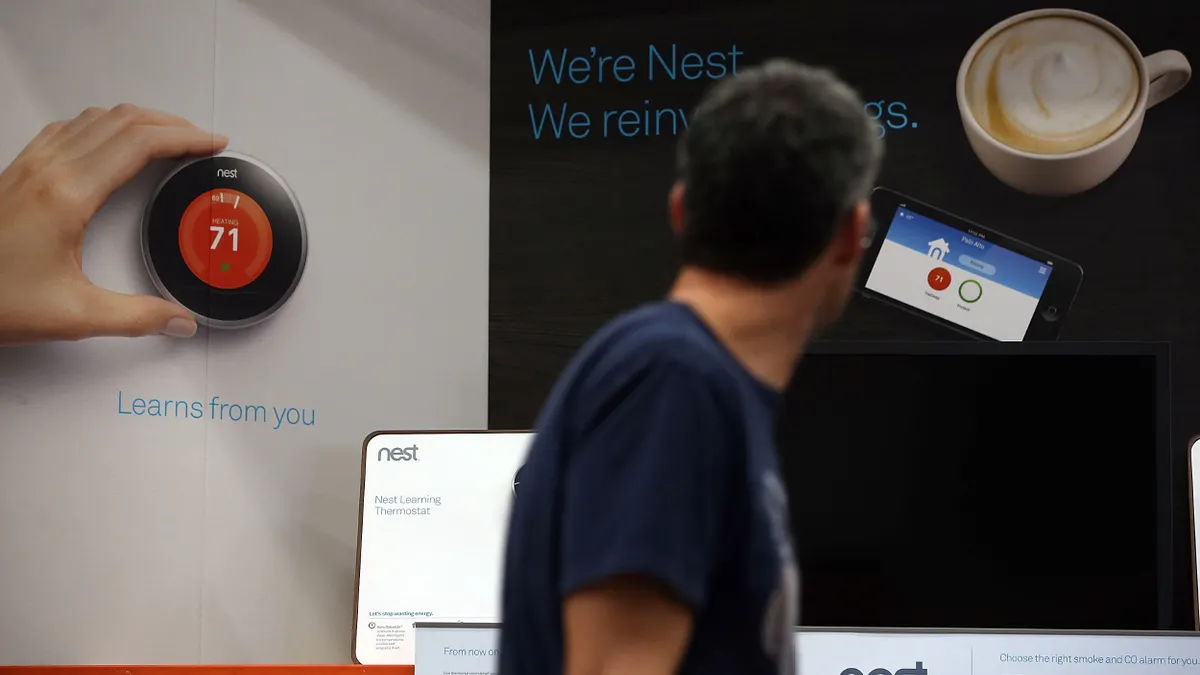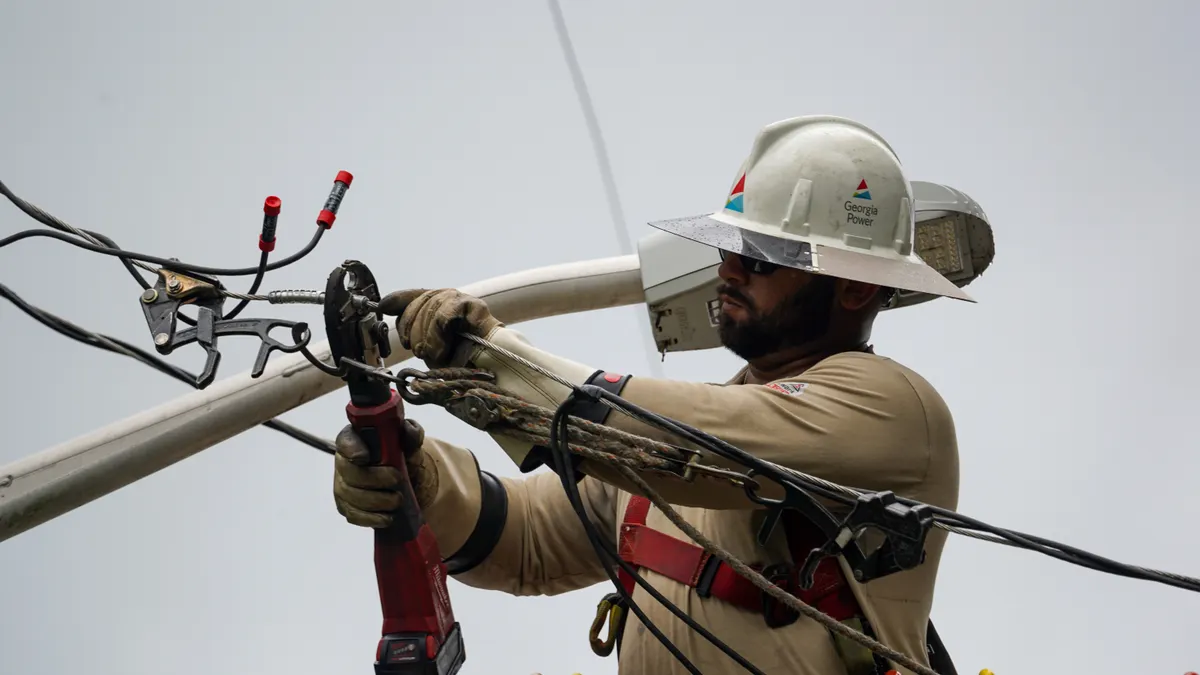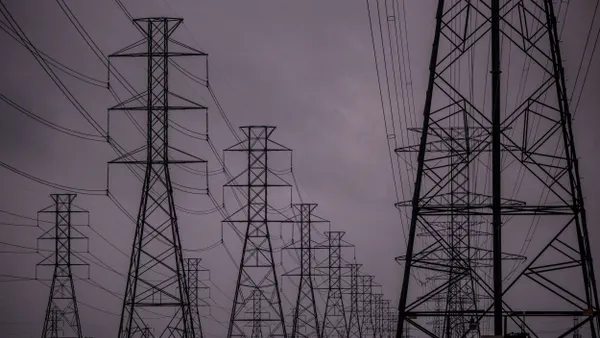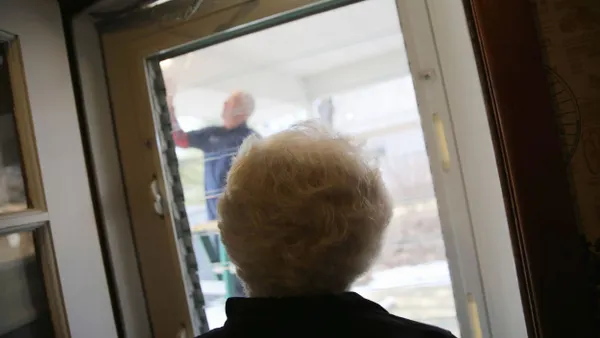Dive Brief:
- Limited customer awareness remains a significant barrier to participation in residential demand response programs, Parks Associates and Resideo Grid Services said in a report released last month.
- Though smart thermostat adoption has doubled in eight years to reach 16% of households with Internet access, only about 20% of those households participate in a DR program, the report said. Fifty-four percent of non-participating customers have not heard of or do not think their utility offers DR, the report said.
- To boost participation and retention in DR programs, utilities and retail electricity providers must focus on “generating awareness, clear education, transparent communication and delivering a consistently comfortable experience,” Resideo Grid Services Director of Technology Michael Siemann said in an email.
Dive Insight:
Parks Associates and Resideo found DR awareness is lowest in Kentucky, Tennessee, Alabama and Mississippi, where a combined 59% of customers polled said they were unaware of or lacked access to demand response programs. Awareness is highest on the West Coast, where 44% of customers said they lacked access or awareness.
Lack of access and awareness are not the only barriers to DR program participation, according to the report. Twenty-nine percent of would-be participants said they have concerns with someone else controlling their thermostat; 34% worried about comfort or convenience; 17% said they don’t have the right thermostat and 16% said program payments aren’t high enough.
In spite of these barriers, Parks Associates found most smart thermostat users who do enroll in DR programs are satisfied with the experience. Sixty-nine percent of participants said DR events were either barely noticeable or “less unpleasant than anticipated,” the report said.
“[Comfort] concerns tend to diminish significantly once customers actually experience modern, targeted DR programs” with “shorter and less disruptive” events, Siemann said.
Resideo’s data shows that while DR events increased 173% from 2021 to 2024, the average enrolled device participated in only 2% more events. Nearly all of the DR events in 2022 involved most of the devices in Resideo’s portfolio, while 22% of DR events in 2024 involved fewer than half. Average event duration also declined, from nearly three hours in 2021 to less than 2.5 hours in 2024.
Siemann said that’s all due to better targeting and predictive modeling that accounts for some level of customer override, which in turn helps utilities plan better for peak periods and increases their confidence in DR programs’ reliability.
“Historically, utilities have questioned the predictability and reliability of voluntary thermostat-based DR programs, primarily around concerns of event participation rates and customer churn,” he said. “That sentiment has shifted [amid] a growing urgency from utilities to scale DR programs quickly in response to rising electricity demand and increased electrification.”
But participation rates remain low and churn rates — representing participants who drop out of DR programs — are still high. While 13% of all U.S. households participate in a DR program, a roughly equal share (12%) have “churned out,” the report found.
The top reason former participants cited for dropping out is that their utility no longer offers the program, but utilities can address other lingering concerns about comfort and external control by communicating frequently and transparently with customers, Siemann said.
For example, he said, Resideo Grid Services and an unnamed “utility partner in the western U.S.” recently tried a “proactive notification approach, sending a group of customers additional email notices about upcoming DR events beyond typical thermostat and mobile app notifications.
“Nearly all respondents found the event notification email useful and would like to continue receiving them, reinforcing the idea that giving customers ample information and the confidence of control enhances both their comfort and their commitment to the program,” Siemann said.
Experts say strategies like these could help DR programs and virtual power plants meet growing energy demand faster and at lower cost than building new generation. Distributed energy resources already help offset gigawatts’ worth of load during extreme weather events like last month’s heat dome, which pushed power demand to near-record levels across the eastern United States.
“We still haven’t hit mass-market penetration” for DR assets, Uplight Chief Growth Officer Hannah Bascom said in an interview earlier this month. “There’s a lot of opportunity to leverage these resources for way, way cheaper than any type of new generation.”














